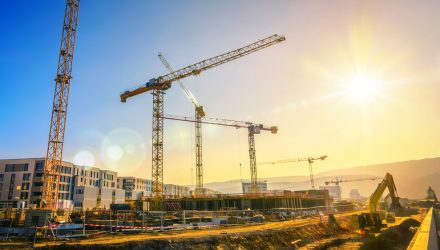These should be important days for infrastructure equities and the related ETFs, including the AGFiQ Global Infrastructure ETF (GLIF).
With Election Day drawing closer and major companies, such as Disney and Wells Fargo, announcing large layoffs because of the coronavirus pandemic, both President Trump and former Vice President Joe Biden could lean on infrastructure plans to rejuvenate the economy and woo voters.
The AGFiQ Global Infrastructure ETF uses a multi-factor investment process to seek long-term capital appreciation by investing primarily in global equity securities in the infrastructure industry. President Trump is pitching a 10-year, $1 trillion infrastructure plan, which is scaled back from his 2016 campaign trail plan. Indeed, costs play a role in determining the fate of domestic infrastructure efforts.
“President Trump and Democratic presidential nominee Joe Biden could not be more different on several tech and innovation issues, according to a report released Monday by the nonpartisan Information Technology & Innovation Foundation,” reports NextGov.
Big Differences
For his part, Trump wants to make the permitting process more efficient, signaling decades-old environmental regulations are hindering infrastructure advancements. Conversely, Biden wants the government to play a more hands-on role in infrastructure.
The White House, regardless of an occupant, may have to step up pressure on states to rehab roads and highways and provide states with the cash to do so.
The infrastructure category has also historically offered higher dividend yields than global fixed-income and global equities, along with greater predictability of long-term cash flows. GLIF may be able to capture the growing demands of economic development that are driving more funding into transport, power, and other systems.
“Trump and Biden also differ significantly on climate innovation, immigration, rural broadband infrastructure, and tax and regulation. While Trump’s budget proposals have reduced funding for clean energy investment, Biden has made climate change a core issue of his campaign,” notes NextGov.
The strong, consistent demand for infrastructure has delivered stable, repeatable cash flows to investors. Meanwhile, population growth, aging infrastructure, and constrained government budgets are creating opportunities for the private sector. The high cost of entering the infrastructure business also limits competition or provides a wide economic moat for those already in the field.
For more alternative investing ideas, visit our Alternatives Channel.
The opinions and forecasts expressed herein are solely those of Tom Lydon, and may not actually come to pass. Information on this site should not be used or construed as an offer to sell, a solicitation of an offer to buy, or a recommendation for any product.








